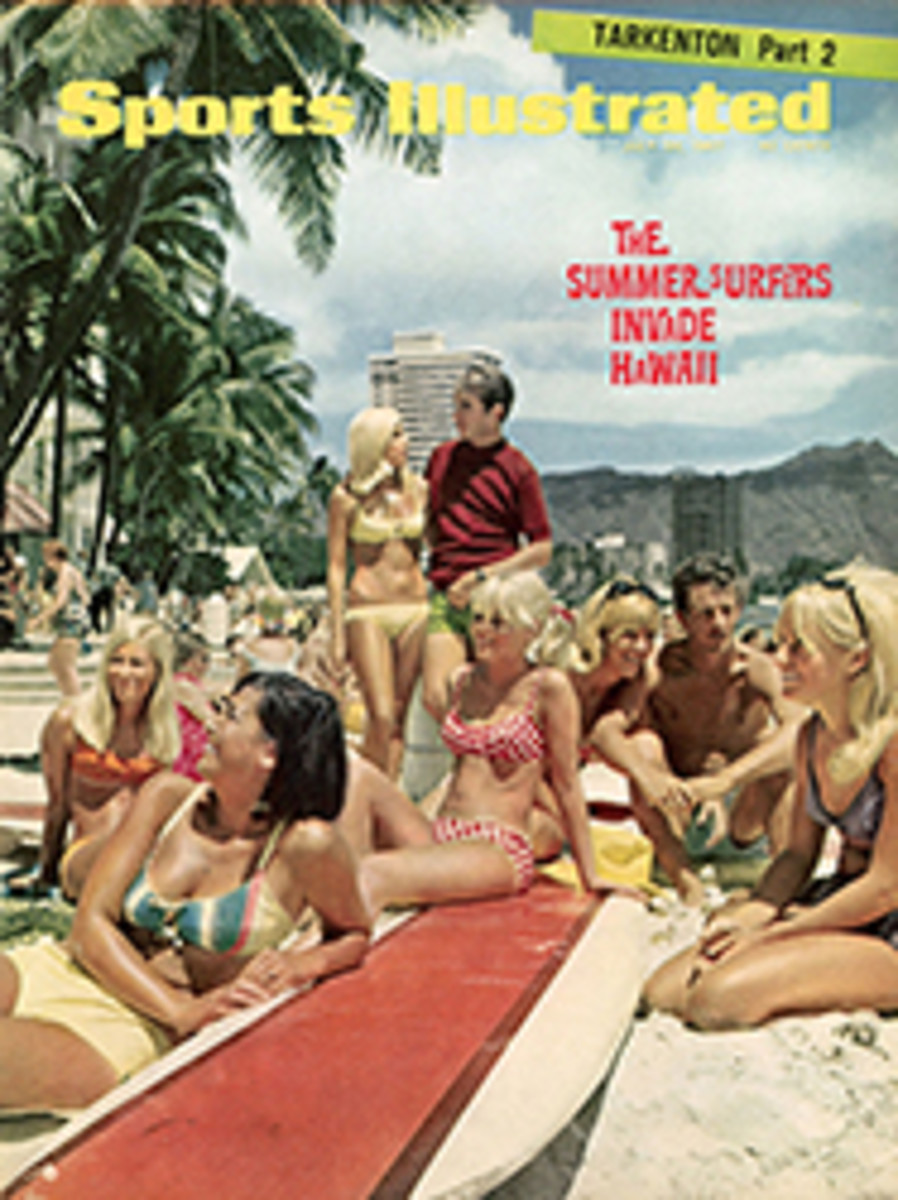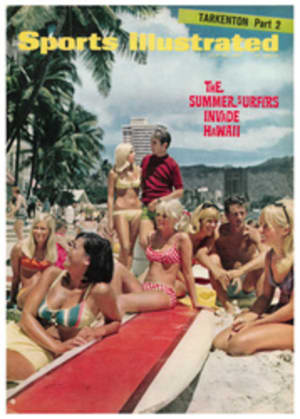
And the last shall be first
Professional tennis players are perhaps the only athletes in the world today whose fame is inversely proportional to their talent. Mention Rod Laver or his constant rival, Ken Rosewall, to any part-time tennis fan and you'll probably get a response like, "Oh, sure, I remember those guys. Laver—he was the little redhead with the big nose and the wristy forehand who won at Forest Hills in, er, when was it? And Rosewall, gosh, yes, he was always winning the Davis Cup for the Aussies with—now, don't tell me—er, Lew Hoad. Gee, whatever happened to those guys?"
Well, what happened to Laver and Rosewall, specifically, was that after showing a certain promise as amateurs back in their youth they went on to learn the game of tennis better and better and to prove to anyone interested in watching that they are indisputably the two greatest players in the world today. The tragedy of tennis is that not enough people are interested and that those who profess to care about the game seem to like it that way. The decision of the International Lawn Tennis Federation last week to continue the rigid apartheid between professional and amateur made it pitilessly clear to the best players in the world that they will have to go on indefinitely bidding for public attention as second-class athletic citizens.
As the ILTF took its vote in Luxembourg the headlines were still echoing to the victory of John Newcombe over a lot of other amateurs at famed Wimbledon, but the best tennis was being played to considerably less acclaim in the U.S. at Massachusetts' Longwood Cricket Club by the 12 players taking part in the International Professional Tennis Association's current tour—a round of tournaments worth $400,000-plus.
For athletes whom many seem to think worthy only of a place on the obituary page, they were a remarkably lively and optimistic group. They were playing the best tennis of their lives—or of anybody else's for that matter—and enough people were watching to make it worthwhile. It would obviously be wrong to conclude at this point that pro tennis has come into its own, but it would be just as wrong to write off the pro tour as a speculative venture that will soon go the way of the hula-hoop. The fact that the pros' so-called U.S. Championships were being held at an old stronghold of the amateur past was something of a coup. There was a time when a professional at Longwood would have been asked to use the servants' entrance.
Some drawbacks of the pro tour are endemic. Because of the small number of contestants, the tournaments tend to be top-heavy. Before his umpteenth campaign at Longwood last week Rod Laver had won nine out of 14 tournaments on the U.S. circuit; Rosewall had won four. At virtually every tournament the semi-finalists include Rosewall, Laver, Andres Gimeno, and either Dennis Ralston or Fred Stolle. Other players, such as Pancho Segura, Mal Anderson and Alex Olmedo—who if amateurs would today be finalists at Forest Hills and Wimbledon—are always cast as spear carriers.
Another obvious negative is the lack of money available. Compared to what pro golf produces, tennis must be satisfied with peanuts, even though the prospects are improving. This year Laver will make about $90,000, and Rosewall, who has played fewer tournaments, about $50,000. Since the sponsor contracts in the various cities are not long-term, there is no guarantee that there will even be a circuit in two or three years. Television, the sugar daddy of all other professional sports, has so far turned its red eye the other way.
On the up-beat side of the argument, however, there is Wally Dill, who is at once executive director of the IPTA and incapable of a negative thought. "If I could think of more bad things than good ones about this game," he says, "I wouldn't be here."
Instead of looking at where the pros should be, Dill chooses to look at how far they've come. "I admit we've got a long way to go," he says, "but consider this. We've got 12 touring pros now. Three years ago there were four. And it wasn't too long ago that a couple of guys would play for $200 and expenses in a supermarket parking lot.
"When I first got into this 18 months ago, there was no real tournament circuit, and prize money amounted to nickels and dimes. Now we make 19 stops in the U.S. alone, and we're playing here at Longwood for $25,000.
"I used to think television was the only answer, and maybe it is. But we've got a five-year contract with Madison Square Garden Corporation, with no TV involved, that guarantees us total prize money of $200,000 in New York. The smallest purse we play for is $10,000. and all the guarantees are going up."
One big problem cited by television people is, of course, the lack of a definite time limit in a tennis match. It may be over in 30 minutes or three hours. Mike Davies, the exuberant Welshman who is one of three players on the IPTA executive committee, pondered this one for a moment last week, then bubbled, "What's the problem? TV plans to cover a fight for an hour, and it can be over in two minutes. A baseball game may drag on forever. They get away with it because they've got an attractive package. That's what we need to come up with, and I think we're making progress. Listen, give me $500,000 and I'll get the top 20 amateurs in the world. That would give us 32 players. Then we'd form a league, with four players in each of eight cities, and play a regular schedule for three months. Then the fans wouldn't be rooting for Rosewall or Gimeno, they'd be cheering for New York against Los Angeles or San Francisco against Chicago or whatever. The players could even wear red or blue uniforms. Why all this white stuff? Tennis tradition is like an old grandmother. Bloody ridiculous.
"Let's experiment. Let's find out what will make tennis appealing, even if it means changing the basics of the game. They change the rules in basketball and football, don't they?"
Laver was a bit more restrained when he talked about the new look of the pro circuit. "Let's face it," he said. "This is a business now. We've got to establish a base, and I think we are doing it. The old tour was nothing more than a sideshow, a traveling circus. It's different now."
PHOTO

